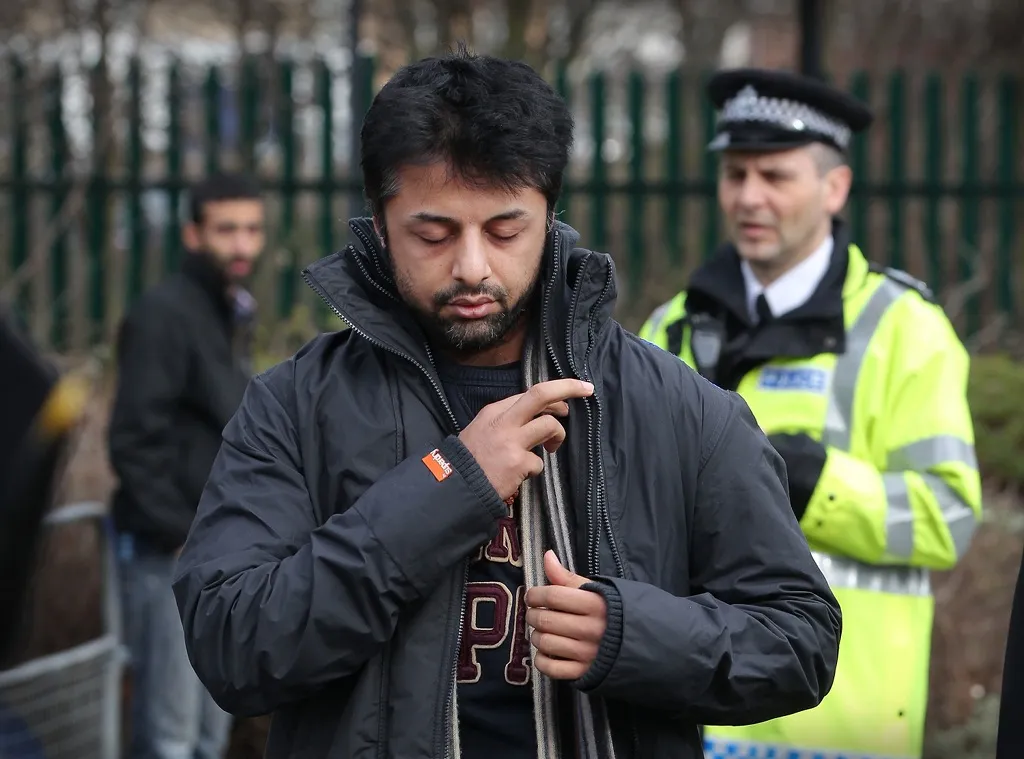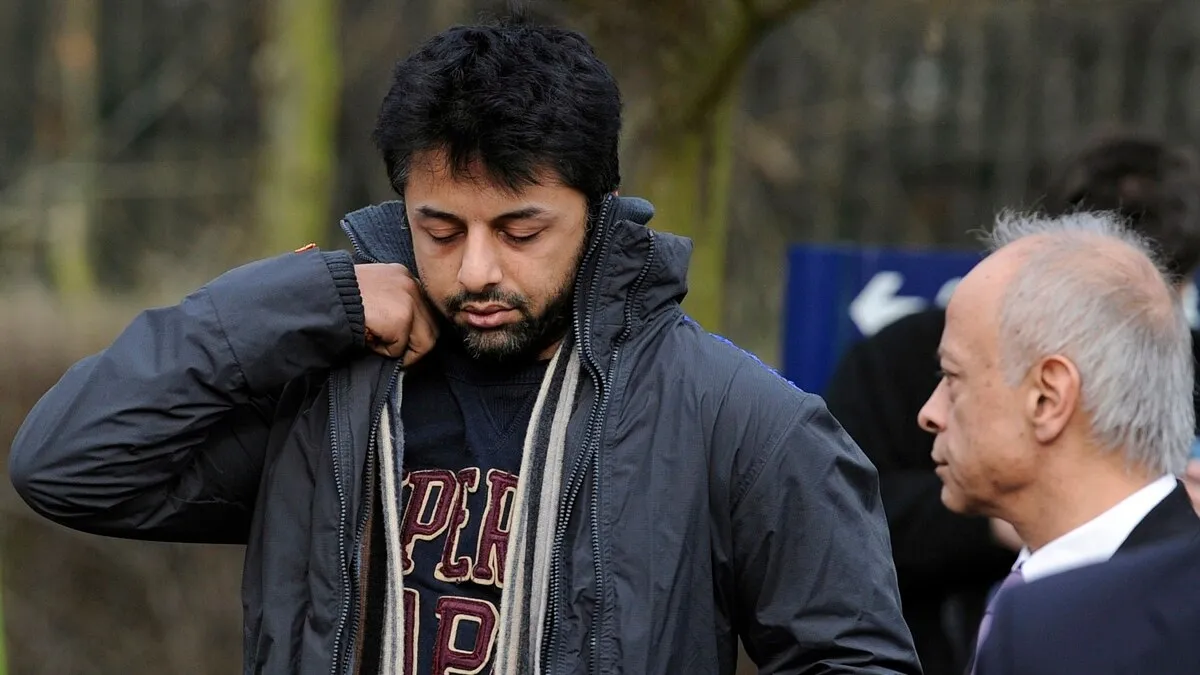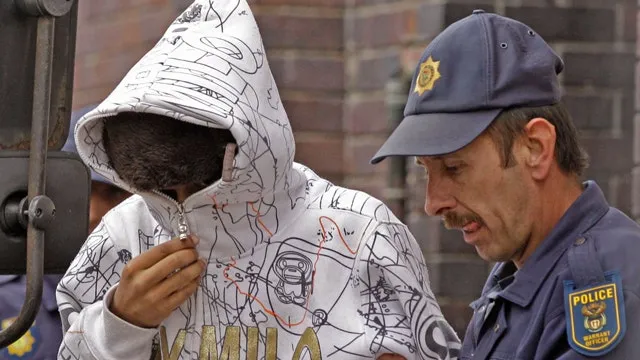The Dark Side of Paradise Honeymoon Murders in South Africa
South Africa, a land of breathtaking beauty and vibrant cultures, often conjures images of romantic getaways and unforgettable honeymoons. However, beneath the surface of this idyllic setting lies a chilling reality the occurrence of honeymoon murders. These heinous crimes shatter the dreams of newlywed couples and leave behind a trail of devastation and unanswered questions. This article delves into the shocking truth behind these tragedies, exploring the cases, motives, and the impact they have on the victims, their families, and the perception of safety for tourists in South Africa. The aim is to shed light on this grim aspect of the country, while also providing insights into how to mitigate risks and stay safe in the face of such dangers.
Early Cases The Genesis of Honeymoon Killings
The history of honeymoon murders in South Africa is not well-documented, partly due to the secretive nature of the crimes and the challenges in investigations. The first reported incidents, however, marked the beginning of a pattern that would later shock the nation and the world. Early cases often involved a mix of factors, including financial gain, relationship problems, and the opportunistic nature of the crime. These initial events set the stage for subsequent tragedies, highlighting vulnerabilities within the tourism sector and the desperation of perpetrators. Examining the genesis of these killings is essential to understanding their evolution and the underlying factors that contribute to them. Analyzing the earliest cases helps to identify recurring patterns and motivations that may be crucial in preventing future incidents.
The First Reported Incidents

The specific details of the earliest cases remain difficult to ascertain due to limited records and ongoing investigations. However, these initial reports often involved couples who were targeted in remote locations or isolated accommodations, indicating a level of premeditation. The motives varied, ranging from the desire for financial gain, such as life insurance payouts, to violent acts stemming from domestic disputes. These early occurrences exposed the vulnerability of honeymooners and highlighted the need for increased security measures in popular tourist destinations. The investigations into these cases were often hampered by a lack of resources, logistical challenges, and sometimes, corruption, which further complicated the pursuit of justice.
Common Motives What Drives These Crimes
Understanding the motivations behind honeymoon murders is crucial to prevent such tragedies. The driving forces behind these crimes are often complex and multifaceted. They can range from financial incentives to deep-seated emotional issues. Investigating these motives helps law enforcement and the public to recognize the warning signs and take proactive steps to protect potential victims. Moreover, examining the psychological and social factors helps to formulate strategies to reduce the likelihood of these heinous acts. By analyzing the various drivers, it becomes possible to develop more effective preventative measures, implement better security protocols, and provide the necessary support systems to those at risk or affected by such crimes.
Financial Gain as a Factor
Financial gain is often a primary motive in these crimes, with perpetrators seeking to benefit from life insurance policies, inheritances, or the victim’s assets. The allure of financial security can be a powerful motivator, leading individuals to commit unspeakable acts. In some cases, the perpetrator may have been in debt or facing financial hardship, and the death of the spouse provided a quick solution to their problems. Insurance fraud is a common element, with perpetrators taking out large policies on their spouses without their knowledge. The investigation of these cases often involves detailed financial forensics to trace the flow of money and identify the beneficiaries. The complex nature of these schemes makes it challenging to uncover the truth and bring the perpetrators to justice.
Relationship Troubles and Violence

Relationship problems and domestic violence can also be significant factors. A honeymoon, often portrayed as a joyous beginning, can expose pre-existing issues within the relationship. Arguments, resentment, and abuse may escalate into violent acts during the vulnerable period of a honeymoon. In some cases, one partner might have been planning the murder for some time, waiting for the right opportunity to strike. The isolation and privacy of a honeymoon provide a perfect setting for such crimes. Recognizing the warning signs of an abusive relationship is crucial. These signs include controlling behavior, jealousy, and threats. Seeking professional help and removing oneself from a dangerous situation are critical steps in preventing tragedy. The emotional and psychological toll of such violence often leaves lasting scars on the victims and their families.
The Psychological Aspect of the Killings
The psychological aspect of these murders is complex, involving issues such as psychopathy, sociopathy, and extreme emotional distress. The perpetrators often display a lack of empathy, planning and executing the crime with calculated precision. They might possess manipulative personalities, enabling them to deceive their victims and evade suspicion. Understanding the psychology of the killers is crucial for law enforcement in developing effective investigative strategies. This involves forensic psychology, behavioral analysis, and other specialized techniques. Mental health assessments of suspects can reveal critical insights into their motives and patterns of behavior. By recognizing these psychological factors, it becomes easier to prevent similar crimes and support the victims of such heinous acts.
Victimology Who Are the Targets
Understanding the victim profile is crucial for recognizing vulnerabilities and preventing future incidents. Identifying the common characteristics of the victims allows for better risk assessment and the development of targeted safety measures. The victims are often chosen based on specific criteria that increase their vulnerability to crime. By examining the circumstances surrounding the cases, law enforcement and the public can gain valuable insights into the patterns of these crimes. Analyzing the demographics, backgrounds, and habits of the victims provides crucial clues to understand the motives behind these heinous acts. It is vital to understand the characteristics of the victims to provide the most effective measures to prevent crime.
Profile of the Typical Victim

The victims of honeymoon murders often share certain characteristics. They may be affluent, holding significant assets or life insurance policies. They are often trusting and naive, especially when dealing with their new spouse. Isolation, both social and geographical, also contributes to their vulnerability. Honeymooners traveling to remote locations or secluded accommodations are more susceptible. Furthermore, victims might have limited support networks, making it harder to notice signs of danger or raise the alarm. These factors create an environment conducive to crime. Understanding the typical victim profile can help in developing preventive measures and providing better support to potential victims. Vigilance and awareness are key elements in the fight against such crimes.
Identifying Vulnerabilities
Identifying vulnerabilities is essential for protecting potential victims. Tourists are particularly vulnerable due to their unfamiliarity with the environment, language barriers, and cultural differences. Individuals who display a high level of trust and lack of suspicion are more likely to be targeted. Financial vulnerability, such as having significant assets or taking out large life insurance policies, can also make a person a target. Being alone or in isolated locations significantly increases the risk. Awareness campaigns and safety tips play a vital role in empowering potential victims to take precautions and minimize their risk. Educating people about potential dangers and providing resources helps create a safer environment.
The Role of Tourism and Isolation
Tourism and isolation often play significant roles in these crimes. South Africa, with its stunning landscapes and popular tourist destinations, attracts numerous honeymooners, but the isolated nature of some locations presents increased risks. Remote lodges, secluded beaches, and private villas can provide the perfect setting for a crime, making it difficult for help to arrive quickly. The tourism industry itself can indirectly facilitate crime through the provision of services or access to vulnerable individuals. The combination of a romantic setting, increased privacy, and unfamiliar surroundings makes it easier for perpetrators to plan and execute their crimes without raising suspicion. Addressing this requires better security measures, improved awareness among tourists, and more stringent vetting processes for tourism-related businesses.
Famous Cases Shocking South African Honeymoon Murders

Several high-profile cases have brought the issue of honeymoon murders in South Africa to the forefront. These infamous incidents, extensively covered by the media, have left a lasting impact on public perception and heightened safety concerns for tourists. The details of these cases, often gruesome and complex, reveal the planning, execution, and aftermath of these heinous crimes. Studying these famous cases provides insight into the various motives, methods, and challenges faced by investigators. Examining these cases is essential to understanding the scope of the problem and implementing effective preventative measures. Sharing these stories also helps raise awareness about the dangers and encourages proactive safety measures.
Case Study 1 Details of a Notorious Incident
One notorious incident involved a couple who were on their honeymoon in a remote lodge when the wife was murdered. The husband was initially a suspect. The investigation revealed that the crime was motivated by financial gain. The husband had taken out a large insurance policy on his wife prior to the wedding. The police investigation uncovered evidence of a premeditated plan, including detailed arrangements for the murder. The case highlighted the importance of thorough background checks, financial investigations, and forensic evidence. The perpetrator was eventually brought to justice, but the case left a lasting impact on the victimu2019s family and the public. This case study serves as a reminder of the devastating consequences of greed and betrayal.
Case Study 2 Another Notable Murder
Another notable murder occurred in a coastal area. A couple’s honeymoon was cut short when the bride disappeared, later found murdered. The investigation revealed evidence of a troubled relationship and domestic violence. The husband was the prime suspect, and the case involved complex forensic analysis and witness testimonies. The investigation faced challenges, including lack of evidence and conflicting statements. This case highlights the significance of awareness of abusive relationships and the need for robust domestic violence intervention programs. The perpetrator was eventually convicted, though the case underscored the devastating impact of violence on families and communities. The case study stresses the importance of being able to recognize the signs of abuse, and the need for the couple to get help.
Investigative Challenges and Obstacles

Investigating honeymoon murders presents significant challenges and obstacles. The circumstances often involve isolated locations, limited witnesses, and complex forensic evidence. These challenges can hinder the progress of an investigation and impede the pursuit of justice. Law enforcement agencies encounter difficulties in gathering evidence, preserving crime scenes, and interviewing suspects. Overcoming these obstacles requires specialized training, advanced investigative techniques, and coordination among different law enforcement agencies. Addressing these issues requires an enhanced commitment to professionalism, innovation, and collaboration within the law enforcement community to ensure that the victims and their families receive justice.
Difficulty in Gathering Evidence
Gathering evidence in these types of crimes can be especially challenging. Crime scenes are often in remote areas, making it difficult to secure and preserve them properly. The perpetrators often take steps to destroy or conceal evidence. The delay in discovering the crime can cause the loss of crucial evidence. Forensic investigations require advanced technology and highly skilled personnel to analyze the evidence. The evidence includes DNA, fingerprints, and digital data. Overcoming these difficulties involves implementing strict protocols for crime scene management, conducting thorough forensic examinations, and utilizing the latest technologies to collect and analyze evidence. Law enforcement agencies need ongoing training to meet the challenges of the evolving nature of criminal activity.
The Impact of Corruption
Corruption can significantly hamper investigations and undermine the pursuit of justice. Bribery, collusion, and interference by corrupt officials can compromise the integrity of evidence and obstruct the prosecution of the guilty. This can lead to delayed investigations, suppressed evidence, and the evasion of justice by perpetrators. Corruption not only harms the victims and their families but also erodes public trust in law enforcement and the justice system. Combating corruption involves implementing strict anti-corruption measures, promoting transparency, and holding corrupt officials accountable. International collaboration and cooperation are also crucial in investigating and prosecuting corrupt practices. Addressing the influence of corruption is paramount to ensuring justice and safeguarding the integrity of the investigative process.
How to Stay Safe on Your Honeymoon

Staying safe on your honeymoon is vital to ensure that it is a memorable and positive experience. While the possibility of crime is always a concern, taking preventative measures and exercising caution can greatly reduce your risk. Planning your trip with safety in mind, being vigilant, and knowing the local emergency numbers are crucial steps. Being aware of your surroundings, choosing safe accommodations, and exercising discretion with personal information are important components of a safety plan. By prioritizing safety, couples can focus on creating lasting memories and enjoying their special time together. Travel insurance is also recommended for peace of mind, along with access to reliable information.
Choosing Safe Accommodation
Selecting safe accommodation is a crucial first step. Researching and choosing reputable hotels, lodges, or villas with good security measures is essential. Look for accommodations with 24-hour security, surveillance cameras, and controlled access points. Read reviews from other travelers to get an insight into the safety and security of the accommodation. Consider accommodations located in well-lit, populated areas rather than secluded locations. Prioritize establishments that have implemented security measures like secure doors, windows, and emergency protocols. Making sure that you know what is going on can reduce your risk by making sure that the hotel is safe, and that your property is safe when you are away.
Security Measures to Implement
Implementing security measures is crucial for protecting yourself and your belongings. Always lock doors and windows when in your room or leaving the premises. Utilize the hotel safe to store valuables such as passports, jewelry, and large sums of money. Avoid displaying expensive items openly. Keep your room key or access card secure and do not leave it unattended. Inform the hotel staff of any suspicious activity. If available, use the peephole or security chain before opening the door. Be cautious about opening the door to strangers. By taking these basic precautions, you will reduce the risk of becoming a victim of crime.
Alertness and Situational Awareness

Maintaining alertness and situational awareness is critical. Pay attention to your surroundings and be aware of any unusual activity. Avoid walking alone in dimly lit or isolated areas, especially at night. Be wary of strangers and exercise caution when interacting with unfamiliar people. Do not disclose your personal information to strangers. Keep your valuables in a secure place, and be mindful of pickpockets and other petty crimes. Trust your instincts; if something feels wrong, remove yourself from the situation. Be prepared for potential emergencies by knowing the local emergency numbers and having a plan. This approach to safety helps to provide a much better travel experience.
The Aftermath Dealing with the Trauma
The aftermath of a honeymoon murder leaves a trail of trauma, grief, and emotional distress for those involved. The experience can affect the victim’s family, friends, and the broader community. Providing support to the victims’ families is critical, as is helping them navigate the legal processes and dealing with the loss. Access to resources and mental health services helps in coping with the trauma and promoting healing. It is vital to acknowledge the emotional and psychological impact of these crimes and to offer the necessary support systems. These services provide comfort and guidance to help individuals heal and rebuild their lives.
Support Systems for Victims Families
Support systems for victims’ families are essential for providing emotional, psychological, and practical assistance. These systems include grief counseling, support groups, and access to legal and financial resources. Organizations offering support can help families navigate the legal process, deal with financial challenges, and provide guidance on memorializing their loved ones. Support groups offer a safe space to share experiences, find comfort, and connect with others who understand the pain of loss. Professional counseling can help family members cope with trauma and develop coping mechanisms. These support systems should be readily available and easily accessible to help families through this difficult time.
Coping with Grief and Loss
Coping with grief and loss after a honeymoon murder is an arduous process. It requires time, patience, and the support of loved ones and professionals. Grief counseling can help individuals process their emotions, develop coping strategies, and navigate the stages of grief. Support groups provide a safe space to share experiences, find solace, and connect with others who have experienced similar losses. Self-care practices such as exercise, meditation, and mindfulness can also help to manage stress and promote emotional well-being. The process of grieving is unique to each individual, and seeking help and support is a sign of strength. The aim is to move towards healing, acceptance, and the eventual restoration of some sense of normalcy.
In conclusion, honeymoon murders in South Africa are a somber reminder of the dark side that can exist, even in the most romantic settings. By understanding the motives, identifying the vulnerabilities, and implementing preventative measures, we can work towards making these beautiful destinations safer for all. May this information help to both prevent future tragedies and support those affected by these devastating crimes.
